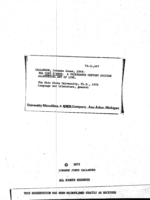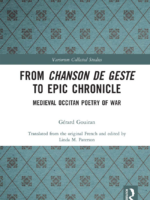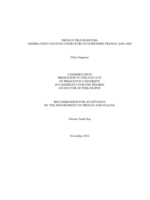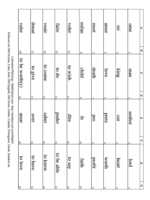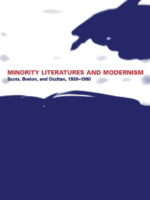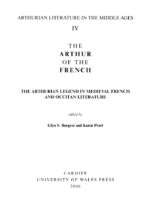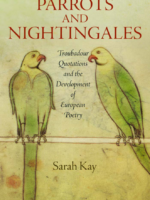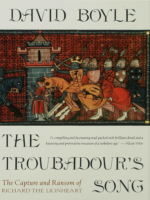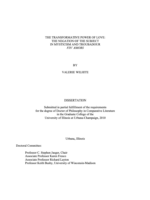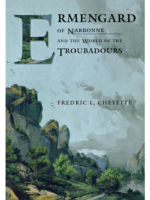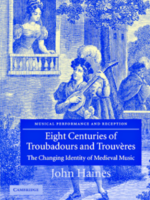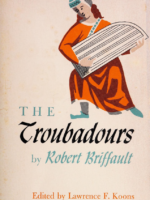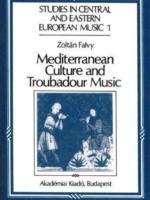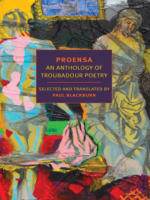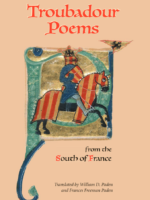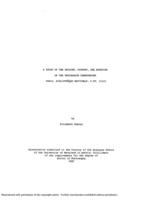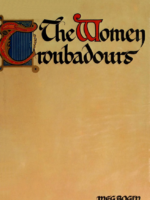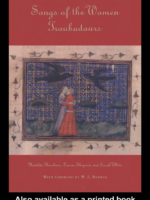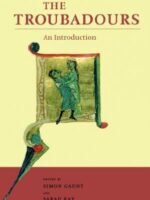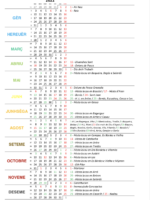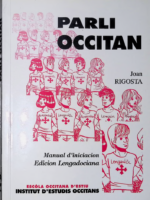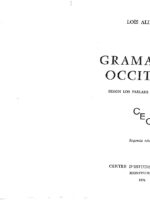Recommended Books
-
The “Cort d’Amor”: A Thirteenth Century Occitan Allegorical Art of Love
0,00 €With the exception of the romance of Flamenca, and to a lesser extent, the Arthurian romance of Jaufre. the medieval Occitan narrative poems of the thirteenth century have attracted very little scholarly attention, and among the shorter novas, only one, the Castla-gllos by Raimon Vidal, has been published recently. No full length study of Occitan allegory has yet appeared, al though one scholar,. Marc-RenS Jung, did devote one chap te r to th is topic in a broad survey of the medieval allegorical poem: Etudes sur le poeme allégorlque en France au rao.yen age. Unfortunately, nearly all studies of medieval allegory that have appeared In the last two decades take one or another of the great epic allegories like The Romance of the Rose. The Divine Comedy, or The Canterbury Tales, as. either point of departure or point of arrival, and as a result, the ensuing source studies or definitions are inevitably distorted by the magnetic field that such masterpieces ordinarily deploy. This tendency is particularly disappointing (in view of the fact that the Occitan allegories are, for the most part, earlier than the Romance of the Rose of Guillaume de Lorris, the first of these epic allegories. For this reason, if for no other, they deserve to be considered for and .by themselves.
-
From Chanson de Geste to Epic Chronicle: Medieval Occitan Poetry of War
0,00 €In this collection of essays Gérard Gouiran, one of the world’s leading and much- loved scholars of medieval Occitan literature, examines this literature from a primarily historical perspective. Through texts offering hitherto unexplored insights into the history and culture of medieval Europe, he studies topics such as the representation of alterity through female figures and Saracens in opposition to the ideal of the Christian knight; the ways in which the narrating of history can become resistance and propaganda discourse in the clash between the Catholic Church and the French on the one hand and the Cathar heretics and the people of Occitania on the other; questions of intertextuality and intercultural relations; cultural representations fashioning the West in contact with the East; and Christian dissidence in the twelfth and thirteenth centuries. Written in an approachable style, the book will be of historical, literary and philological interest to scholars and students, as well as any reader curious about this hitherto little-known Occitan literature.
Gérard Gouiran was born in 1945 at Le Rove, which was then a small village close to Marseille. His parents often spoke Occitan between themselves but avoided doing so with their children for fear of damaging their education. It was only after studying classics in Marseille and then Paris that Professor Gouiran rediscovered the Occitan language, and from then on he has devoted himself to medieval literature. Best known for his magisterial edition of the troubadour Bertran de Born, he has written – and spoken – widely on troubadour lyric, epic and romance.
Linda M. Paterson taught at Northeastern University, Boston, USA, for two years before moving to the University of Warwick, UK, in 1971, where she is now Professor Emerita. Her books include Troubadours and Eloquence (1975); The World of the Troubadours: Medieval Occitan Society, c.1100–c.1250 (1993); Culture and Society in Medieval Occitania (2011); and Singing the Crusades: French and Occitan Lyric Responses to the Crusading Movement, 1137–1336 (2018).
-
French troubadours: assimilating Occitan literature in northern France (1200-1400)
0,00 €French Troubadours explores the reception of Occitan lyric in France in the thirteenth and fourteenth centuries, that is, in the period corresponding to the Albigensian Crusade (1209–1229) and its aftermath, which witnessed France’s annexation of the majority of Occitania. Surveying the corpus of French romances that quote Occitan song (Part I) and French songbooks that also contain Occitan lyrics (Part II), it shows how Occitan poems–from the very beginning of their French reception–were subtly incorporated into the French canon by way of imitation, compilation with French texts, and adaptation to the French sound system.
Chapter 1, on Jean Renart’s Roman de la rose, shows how the troubadours are collapsed into a set of francophone lyrics, which are enjoyed not in France but by the Holy Roman Emperor. French-language lyric, and other forms of French culture, are presented as the degre zero of culture in the German Empire, while Germanic languages are treated as foreign. In Chapter 2, I turn to Gerbert de Montreuil’s Roman de la violette, which, like Renart’s Rose, appropriates troubadour lyrics linguistically, and–in one instance–also associates them with the Holy Roman Empire. Here, however, the Holy Roman Empire is not a neutral cadre, but a negative space. Chapter 3, devoted to Richard de Fournival’s Bestiaire d’amour, shows how Richard obscures the first-person language and rhyme of the troubadour poems he quotes.
In Part II, I turn to the set of French songbooks that transmit Occitan lyric. A study of compilation patterns reveals that, rather than being transmitted in a separate section of songbooks, Occitan poems–which are often Gallicized–are almost always interspersed with French lyrics. Consequently, a medieval reader who encountered the troubadours only in French transmission would have little chance of recognizing their cultural specificity. In Chapter 5, I explore the “pseudo-Occitan” corpus, which comprises pieces that contain Occitan phonological coloring but were probably composed by francophones. I show that these pieces occur primarily in a lower register. This trend fictionally repositions Occitan lyric as both “primitive” and–by extension–as anterior to French lyric.
-
Old Occitan Flash Cards
0,00 €Liberation Philology libphil@aol.com.
Software for Icelandic, Norwegian, Danish, Swedish, Finnish, Old Norse, Gothic, Latin, Old English , Greek, Sanskrit etc. -
Minority Literatures and Modernism: Scots, Breton, and Occitan, 1920-1990
0,00 €A quiet renaissance has been unfolding in certain parts of Europe – a renaissance of literature written in minority languages. In this book, William Calin explores the renaissance through an examination of twentieth-century works in Scots, Breton, and Occitan minority languages flourishing inside the borders of the United Kingdom and France.
For each of the three bodies of literature Calin considers major authors whose works include novels, poetry and plays, and shows that all three literatures have evolved in a like manner, repudiating their romantic folk heritage and turning instead to modern and postmodern concerns. Drawing on current critical theories in periodization, postcolonialism and cultural studies, Calin raises a range of comparative questions: Is there a common form of narrative prevalent in minority cultures that is neither realism nor metafiction? Is the minority-language theatre limited to plots treating past history and the rural present? What is the relationship between the minority literature and literature in the national language? What kind of history should be written on the literatures of Scotland, Brittany and the South of France, manifest in their several languages?
Calin’s pioneering study is the first comparative scrutiny of these minority literatures and the first to bring all three together into the mainstream of present-day criticism. His work demonstrates the intrinsic importance in their twentieth-century renewal, as well as their contribution to global culture, in both aesthetic and broadly human terms.
-
The Arthur of the French: The Arthurian Legend in Medieval French and Occitan Literature
0,00 €This major reference work is the fourth volume in the series “Arthurian Literature in the Middle Ages”. Its intention is to update the French and Occitan chapters in R.S. Loomis’ “Arthurian Literature in the Middle Ages: A Collaborative History” (Oxford, 1959) and to provide a volume which will serve the needs of students and scholars of Arthurian literature. The principal focus is the production, dissemination and evolution of Arthurian material in French and Occitan from the twelfth to the fifteenth century. Beginning with a substantial overview of Arthurian manuscripts, the volume covers writing in both verse (Wace, the Tristan legend, Chretien de Troyes and the Grail Continuations, Marie de France and the anonymous lays, the lesser known romances) and prose (the Vulgate Cycle, the prose Tristan, the Post-Vulgate Roman du Graal, etc.).
-
Parrots and nightingales : troubadour quotations and the development of Europea poetra
0,00 €The love songs of Occitan troubadours inspired a rich body of courtly lyric by poets working in neighboring languages. For Sarah Kay, these poets were nightingales, composing verse that is recognizable yet original. But troubadour poetry also circulated across Europe in a form that is less well known but was more transformative. Writers outside Occitania quoted troubadour songs word for word in their original language, then commented upon these excerpts as linguistic or poetic examples, as guides to conduct, and even as sources of theological insight. If troubadours and their poetic imitators were nightingales, these quotation artists were parrots, and their practices of excerption and repetition brought about changes in poetic subjectivity that would deeply affect the European canon.
The first sustained study of the medieval tradition of troubadour quotation, Parrots and Nightingales examines texts produced along the arc of the northern Mediterranean—from Catalonia through southern France to northern Italy—through the thirteenth century and the first half of the fourteenth. Featuring extensive appendices of over a thousand troubadour passages that have been quoted or anthologized, Parrots and Nightingales traces how quotations influenced the works of grammarians, short story writers, biographers, encyclopedists, and not least, other poets including Dante and Petrarch. Kay explores the instability and fluidity of medieval textuality, revealing how the art of quotation affected the transmission of knowledge and transformed perceptions of desire from the “courtly love” of the Middle Ages to the more learned formulations that emerged in the Renaissance. Parrots and Nightingales deftly restores the medieval tradition of lyric quotation to visibility, persuasively arguing for its originality and influence as a literary strategy.
-
The Troubadour’s Song: The Capture and Ransom of Richard the Lionheart
0,00 €Chronicles the events surrounding the capture and release of King Richard I during the twelfth-century Third Crusade, describing the ransom delivered by Eleanor of Aquitaine that represented one quarter of England’s wealth and the subsequent legend that evolved about the singing troubadour, Blondel. By the author of The Sum of Our Discontent.
-
Songs of the Women Trouvères
0,00 €We bring together here the songs of all medieval women whose names are recorded in the rubrics or tables of contents of various Old French manuscripts as composers of songs or as participants in jeux-partis and tensons (debate poems). The songs by women whose names are known are relatively few in number, but there were undoubtedly many more women composers, and whereas their names are lost to us, some of their songs are probably still extant, though bereft of proper attribution. Accordingly, we have chosen to include a generous sampling of anonymous works—chansons de femme (women’s songs), rondeaux, and motets—both because they offer a wide variety of female voices and because some of these pieces may well have been composed by women. We hope in this way to rectify a situation that for many years has denied women their rightful place in the pantheon of Old French medieval lyric poets.
For, as surprising as it may seem, the very title of our anthology, Songs of the Women Trouvères, makes a bold, even controversial, statement. Although nearly all scholars now acknowledge the existence of medieval women who composed poetry in other romance languages (Occitan, Spanish, Italian, Galician- Portuguese), most have accepted without question Pierre Bec’s contention that none of the songs composed in northern France in the twelfth or thirteenth centuries are the product of a woman trouvère (Bec 1979: 236). A number of Old French songs feature women’s voices ( féminité textuelle), particularly in the lyric type known as the chanson de femme. However, féminité textuelle does not necessarily imply female authorship (féminité génétique), to use a distinction introduced by Bec himself (1979: 235–36). The majority of these songs are anonymous, but because most of the ones that are attributed in the manuscripts are credited to a male author, Bec has concluded that no Old French songs of the period in question were composed by women. Although many have agreed with Bec, the literary history of the past 125 years includes a few dissenters who base their opinion on evidence that until recently was either ignored or not seriously considered. A brief summary of that history is instructive, as it highlights the major arguments for and against the historical existence of the women trouvères.
-
The transformative power of love
0,00 €This dissertation compares the works of select troubadours with three mystical tracts in order to present the similarities found in these two literary traditions. Mystical writings have a far longer history reaching into antiquity and continuing until the present day. The traces in the manuscript traditions situate in the late eleventh century a new poetic form in Occitan with a focus on earthly love. The love as it is described in the songs of the composers who write or sing about it comes to be called bon amors or fin’ amors, the term we use today to name the love of the troubadour tradition. The period of lyrical production in Occitan by troubadours speaking of fin’ amors does not endure more than three centuries if we begin our count with Guilhem IX (1071-1126) and close with the poet so often called the last of the troubadours, Guiraut Riquier (1254-1292). These two traditions of love literature are thus distinguished by the nature of their literary histories and also by the loves they describe. Despite this, the shape of the loves they discuss as well as the language used to speak about love are not so different.
-
Ermengard of Narbonne and the World of the Troubadours
0,00 €Ermengard of Narbonne. Even to specialists in the history of the Middle Ages her name is hardly known. Eleanor of Aquitaine, who was wife to two kings and the mother of three more? Yes, there is a name-and a story-to conjure with. Countess Marie of Champagne, Eleanor’s daughter by King Louis VII of France, patron of Chretien de Troyes, the poet who in- vented the Arthurian romance? She too is better known, if only because of the writers who thronged to her court. Ifwe know anything about the Middle Ages we have at least heard of King Richard the Lionheart and his brother King John, who was forced to grant the Magna Carta at Runnymede, both of them sons of Queen Eleanor. We have also surely heard of the mythical King Arthur and his Round Table, of Lancelot and Guinevere, of the quest for the Holy Grail, all of them largely the creation of Chretien. Ermengard, however, has fallen off the historical map.
-
Eight Centuries of Troubadours and Trouveres: The Changing Identity of Medieval Music
0,00 €From the medieval chansonniers to contemporary rap renditions, this book traces the changing interpretation of troubadour and trouv?re music, a repertoire of songs which have successfully maintained public interest for eight centuries. A study of their reception, therefore, serves to illustrate the development of the modern concept of “medieval music”. Important stages in their evolution include sixteenth-century antiquarianism; the Enlightenment synthesis of scholarly and popular traditions; and the infusion of archaeology and philology in the nineteenth century, leading to more recent theories on medieval rhythm.
-
The Troubadours
0,00 €Combining extraordinary learning with grace of style, this volume provides the first comprehensive work in English on the poetic heritage of the medieval troubadours and the particular impact of the troubadour tradition on Italian and English verse. The songs of the troubadours with their intense lyricism “answered the mood of a feudal society newly awakened to a sense of its native uncouthness by contact with the luxury of the Orient.”
-
Mediterranean culture and troubadour music
0,00 €Mediterranean Culture and Troubadour Music by Zoltan Falvy. The volume gives an account of the origins of troubadour music and the development of European secular music. It focuses on the Spanish cantiga manuscript and the troubadour manuscript group. A significant part of the book deals with the Arab thesis modifying the theory by asserting that Arabic poetry was but one of the mediterranean influences on the troubadours. In an important chapter the author examines with musical orientation the social history of the 13th century period of Alphonse the Wise. A special chapter is de-voted to the clarification of the role of the heretic movements. The stylistical analysis of all the extant melodies of Peire Vidal and Gaucelm Faidit brings out the interesting discovery that troubadour music has archaic features that may be close to European folk music. Zoltan Falvy’s book has a completely new approach to troubadour music demonstrating that court music adapted to court poetry has a structure independent of the poem.
-
Proensa: An Anthology of Troubadour Poetry
0,00 €It was out of medieval Provence – Proensa – that the ethos of courtly love emerged, and it was in the poetry of the Provençal troubadours that it found its perfect expression. Their poetry was also a central inspiration for Dante and his Italian contemporaries, propagators of the modern vernacular lyric, and seven centuries later it was no less important to the modernist Ezra Pound. These poems, a source to which poetry has returned again and again in search of renewal, are subtle, startling, earthy, erotic, and supremely musical.
The poet Paul Blackburn studied and translated the troubadours for twenty years, and the result of that long commitment is ‘Proensa’, an anthology of thirty poets of the eleventh through thirteenth centuries, which has since established itself not only as a powerful and faithful work of translation but as a work of poetry in its own right. Blackburn’s ‘Proensa’, George Economou writes, “will take its place among Gavin Douglas’ ‘Aeneid’, Golding’s ‘Metamorphoses’, the Homer of Chapman, Pope, and Lattimore, Waley’s Japanese, and Pound’s Chinese, Italian, and Old English.”
-
Troubadour Poems from the South of France
0,00 €The poetry of the troubadours was famous throughout the middle ages, but the difficulty and diversity of the original languages have been obstacles to its appreciation by a wider audience. This collection aims to redress the situation, presenting English verse translations in contemporary idiom and a highly readable form. It includes some 125 poems, with a strong representation of those composed by women, and goes beyond traditional limits in time to feature a sampling of the earliest texts in the Occitan language, written in the tenth and eleventh centuries, and later works from the early fourteenth. Though most poems translated in the book were written in Occitan, the vernacular of southern France, there are also a few translations of poems written in the same place and time but in other languages, including Latin, Hebrew, Norse, Catalan, and Italian. Genres include love songs, satires, invectives, pastourelles, debates, laments, and religious songs. A comprehensive introduction places the troubadours in their historical context and traces the development of their art; headnotes introduce each poet, and the book ends with a bibliography and suggestions for further reading.
-
A Study of the Origins, History, and Notation of the Troubadour
0,00 €The chansonnier Paris, Bibliotheque nationale, f. fr. 22543 (known as “R”) has been recognized for over 200 years as a precious repository of the literature of the medieval troubadours of southern France. It transmits almost 950 lyric poems and 160 melodies, along with many other important writings in the Occitan language, many of which are unica.
The paleography, decoration, and dialect of the manuscript are described thoroughly, and their distinctive features are seen to support the hypothesis that R was compiled in northern Languedoc or western Provence around 1300. While most of the texts of R were copied by one scribe, the relatively few melodies it contains were probably notated by at least four different copyists. Over eighty percent of the poems were never supplied with their melodies, even though musical staves were provided; these staves were left empty. The notation is in the style of the so-called Notre Dame school of Paris, and the rhythms of the notes are not apparent, although a few seem to be in rudimentary mensural notation.
The manuscript contains some works of the troubadours of the early twelfth century, and also a large number of works by late thirteenth-century poets. By examining internal paleographical data and making comparisons with other extant codices, it is possible to offer suggestions on the nature of the exemplars of this heterogeneous collection. The problems of determining how the texts and melodies were transmitted are investigated, including the issues of oral transmission, the lack of extant autographs, the disparity in the origins of the surviving manuscripts, and the variant attributions. The musical transmission is especially problematic, since only three other sources containing music survive. The forty-five concordances that R shares with these other codices are discussed.
A review of the modern history of the manuscript shows that the earliest known owner was the Marquise d’Urfe of the early eighteenth century. The commonly accepted belief that R was in the library of her ancestor the poet Honore d’Urfe in the seventeenth century is found to be unsupported by the available evidence.
-
The Women Troubadours
0,00 €This is the first twentieth-century study of the women troubadours who flourished in Southern France between 1150 and 1250 — the great period of troubadour poetry. The book is comprised of a full-length essay on women in the Middle Ages, twenty-three poems by the women troubadours themselves in the original Provencal with translations on facing pages, a capsule biography of each poet, notes, and reading list.
-
Songs of the Women Troubadours
0,00 €An edition and translation of some 30 poems by the trobairditz, a remarkable group of women poets from the 12th and 13th centuries, who composed in the style and language of the troubadours.
-
The Troubadours: An Introduction
0,00 €This book offers a general introduction to the world of the troubadours. Its sixteen chapters, newly commissioned from leading scholars in Britain, the United States, France, Italy and Spain, trace the development of troubadour song (including music), engage with the main trends in troubadour scholarship, and examine the reception of troubadour poetry in manuscripts and in Northern French romance. A series of appendices offer an invaluable guide to more than fifty troubadours, to technical vocabulary, to research tools and to surviving manuscripts.

